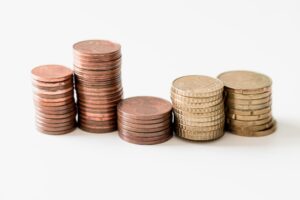Understanding Forex Exchange Rates: A Beginner’s Guide
Forex exchange rates play a crucial role in the global economy, impacting international trade, investments, and tourism. As a beginner in the world of forex trading, it is essential to have a clear understanding of exchange rates and how they are determined. In this article, we will delve into the basics of forex exchange rates, including their definition, factors influencing them, and how they are calculated.
What are Forex Exchange Rates?
Forex exchange rates, also known as foreign exchange rates or currency exchange rates, represent the value of one currency relative to another. These rates determine how much of one currency can be exchanged for another currency. For example, if the exchange rate between the US dollar and the Euro is 1.2, it means that one US dollar is equivalent to 1.2 Euros.
Exchange rates are continuously changing due to various factors such as market conditions, economic indicators, and geopolitical events. The forex market is the largest and most liquid market globally, with trillions of dollars being traded daily. Understanding exchange rates is crucial for individuals and businesses engaged in international transactions, as fluctuations can significantly impact their financial outcomes.
Factors Influencing Forex Exchange Rates
Several factors influence forex exchange rates, and it is important to consider them when analyzing the market. Some of the key factors include:
1. Interest Rates: Interest rates set by central banks have a significant impact on exchange rates. Higher interest rates attract foreign investors, leading to an increase in demand for the currency and strengthening its value.
2. Inflation: Inflation erodes the purchasing power of a currency. Countries with lower inflation rates tend to have stronger currencies compared to those with higher inflation rates.
3. Economic Performance: The overall economic performance of a country affects its currency’s value. Stronger economic indicators, such as GDP growth, low unemployment rates, and stable fiscal policies, contribute to a stronger currency.
4. Political Stability: Political stability is crucial for maintaining a strong currency. Countries with stable political environments are more likely to attract foreign investment, leading to an appreciation in their currency value.
5. Market Sentiment: Market sentiment and investor confidence can cause rapid changes in exchange rates. Factors such as geopolitical events, economic crises, or unexpected news can create volatility in the forex market.
Calculating Exchange Rates
Exchange rates are determined through the foreign exchange market, where currencies are bought and sold. There are two types of exchange rates: spot exchange rates and forward exchange rates.
Spot exchange rates are the current rates at which currencies can be bought or sold for immediate delivery. These rates fluctuate in real-time based on market demand and supply. Forward exchange rates, on the other hand, represent future exchange rates agreed upon today for a specific date in the future.
Exchange rates are typically quoted in currency pairs, such as USD/EUR or GBP/JPY. The first currency in the pair is the base currency, while the second currency is the quote or counter currency. For example, in the EUR/USD pair, the Euro is the base currency, and the US dollar is the quote currency.
To calculate exchange rates, one can use the formula:
Exchange Rate = (Price of Base Currency / Price of Quote Currency)
For instance, if the price of 1 Euro is $1.20, the exchange rate for EUR/USD would be 1.20.
Conclusion
Understanding forex exchange rates is essential for anyone entering the world of forex trading or engaging in international transactions. Exchange rates determine the value of currencies relative to each other and are influenced by various factors such as interest rates, inflation, economic performance, political stability, and market sentiment.
Being aware of these factors and their impact on exchange rates can help traders make informed decisions and mitigate risks. Additionally, keeping track of current exchange rates and market trends is crucial for individuals and businesses involved in international trade or travel.
Forex exchange rates are dynamic and constantly changing, making the forex market an exciting and challenging space. By continuing to educate oneself on the intricacies of exchange rates, beginners can develop a solid foundation for navigating the forex market and maximizing their trading potential.





